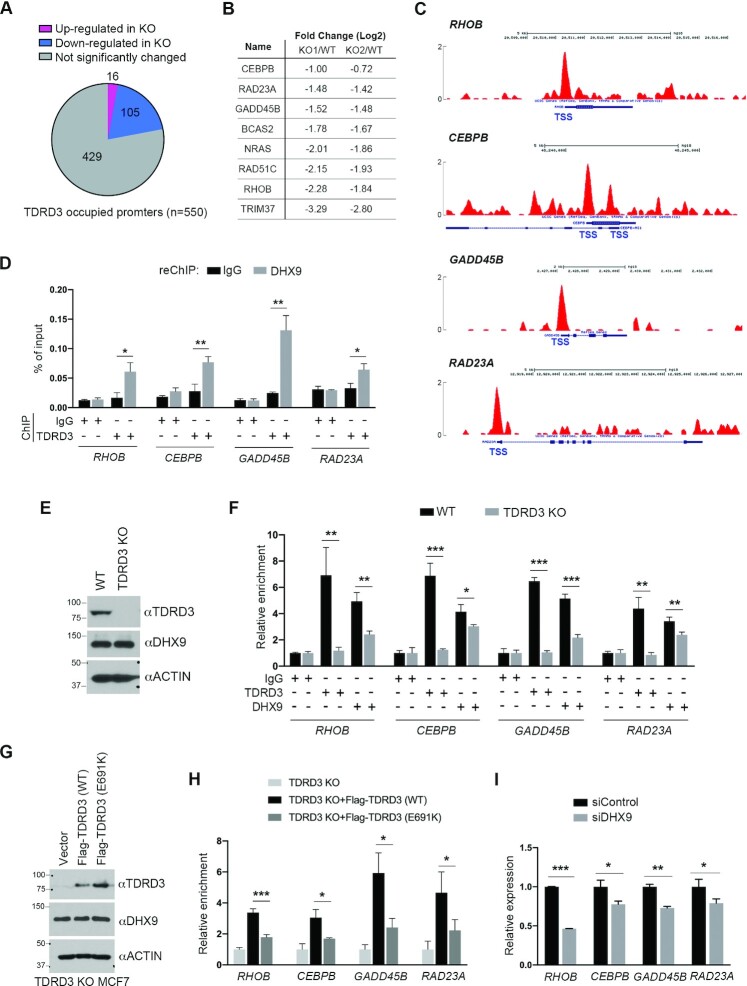Figure 3.
TDRD3 recruits DHX9 to its target gene promoters. (A) A pie-chart demonstration of genes with TDRD3 bound to their promoters and genes up- or down-regulated after TDRD3 knockout (KO) in MCF7 cells. (B) Genes showing more than a 2-fold reduction in TDRD3 KO versus wild type (WT) MCF7 cells were selected for further analysis. The relative expression of each gene in both KO clones is shown. (C) UCSC Genome Browser plots of TDRD3 ChIP-seq reads along the indicated genes in MCF7 cells. The y-axis represents the normalized number of reads; the thick blue boxes represent the open reading frames; and the transcription start site (TSS) is labeled. (D) A ChIP-reChIP assay was performed to detect the co-occupancy of TDRD3 and DHX9 at target gene promoters. The first round of ChIP was performed using control IgG and αTDRD3 antibodies, and the second round of ChIP (reChIP) was performed using IgG and αDHX9 antibodies. ChIP DNA was analyzed by qPCR using primers for the indicated gene promoters. (E) TDRD3 KO does not affect DHX9 protein expression. TDRD3 and DHX9 were detected in WT and TDRD3 KO MCF7 cells by western blot analysis. ACTIN was used as a loading control. (F) Loss of TDRD3 reduces DHX9 recruitment to target gene promoters. ChIP assays were performed in WT and TDRD3 KO MCF7 cells using control IgG, αTDRD3, and αDHX9 antibodies. (G) Rescued expression of Flag-tagged WT and methylarginine binding-deficient (E691K) TDRD3 in TDRD3 KO MCF7 cells, detected by western blot analysis. (H) The methylarginine binding function of TDRD3 is essential for promoting DHX9 recruitment to the target gene promoters. DHX9 ChIP assays were performed in TDRD3 KO MCF7 cells and TDRD3 KO MCF7 cells re-expressing Flag-TDRD3 (WT) and Flag-TDRD3 (E691K). The relative enrichment of DHX9 in TDRD3 KO MCF7 cells was used for normalization. (I) DHX9 knockdown reduces TDRD3 target gene expression. MCF7 cells were transfected with either control siRNA (siControl) or DHX9-specific siRNA (siDHX9). The expression of TDRD3 target genes was detected by RT-qPCR assays. Experiments were performed independently for three times. Data are represented as mean ± standard deviation of three technical qPCR replicates. Statistical analysis was performed using Student's t-tests. * P < 0.05; ** P < 0.01; *** P < 0.001.

